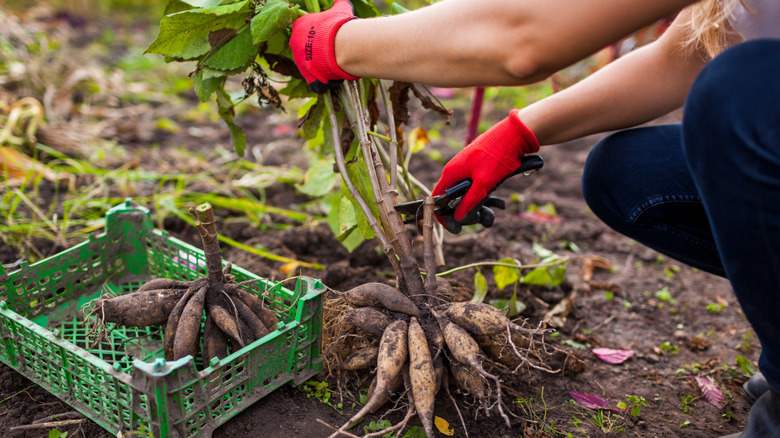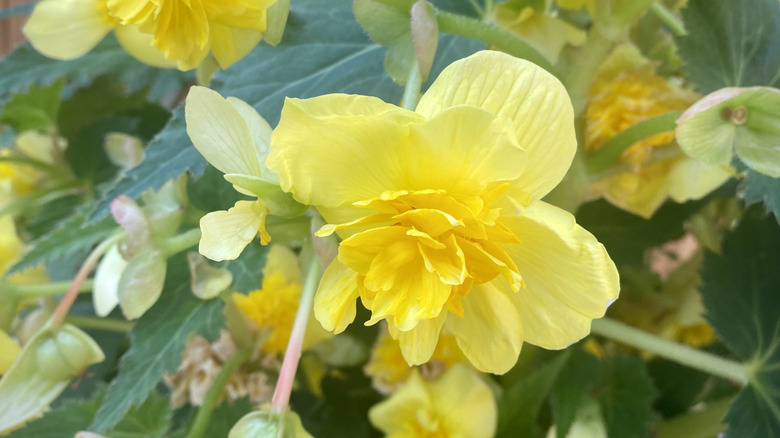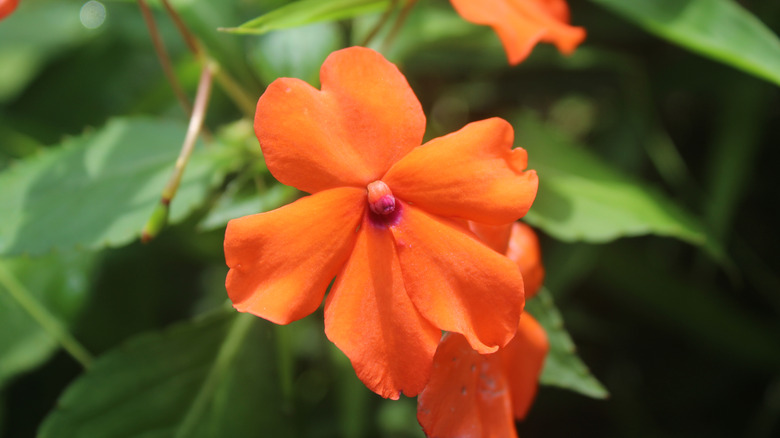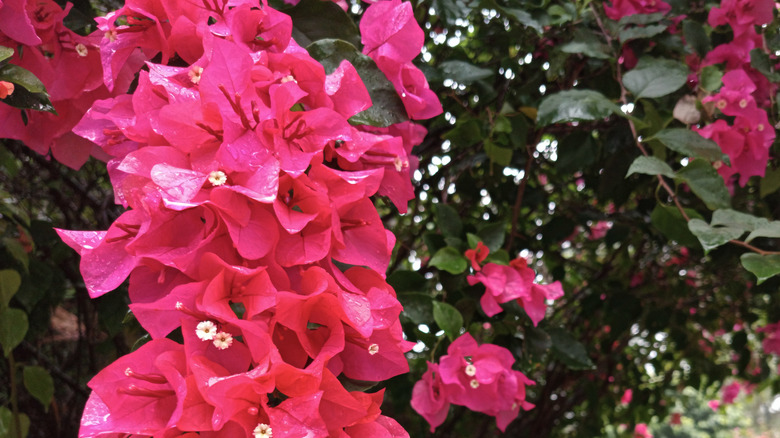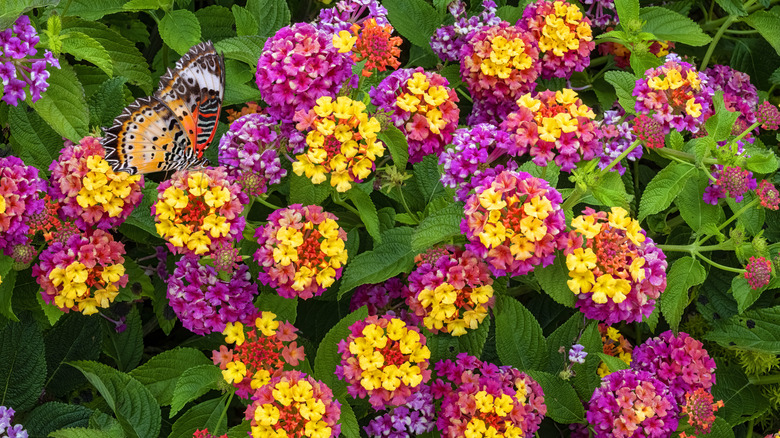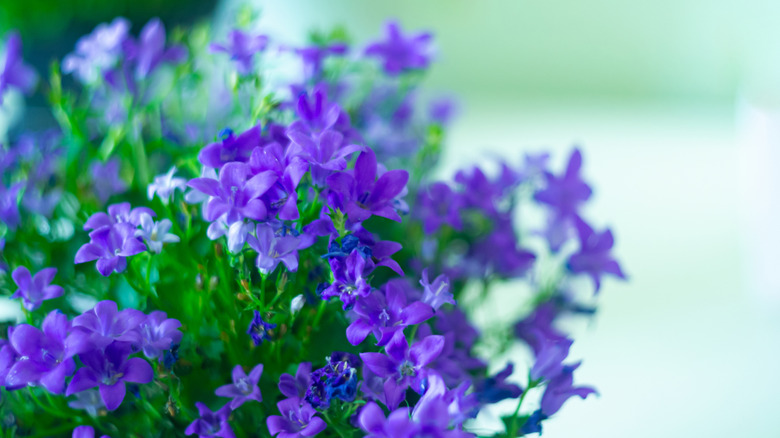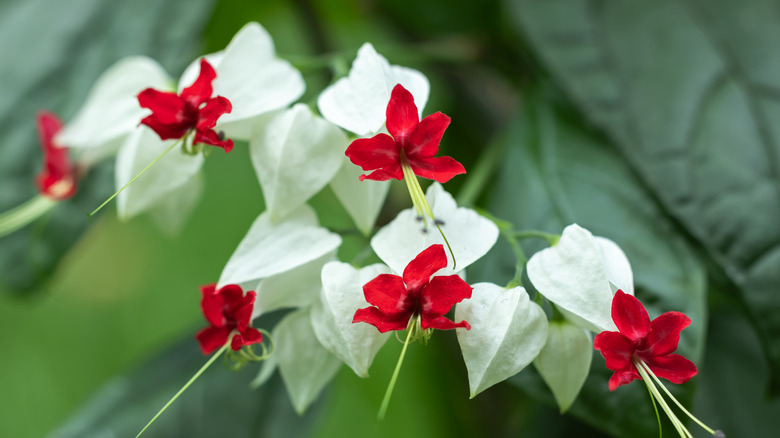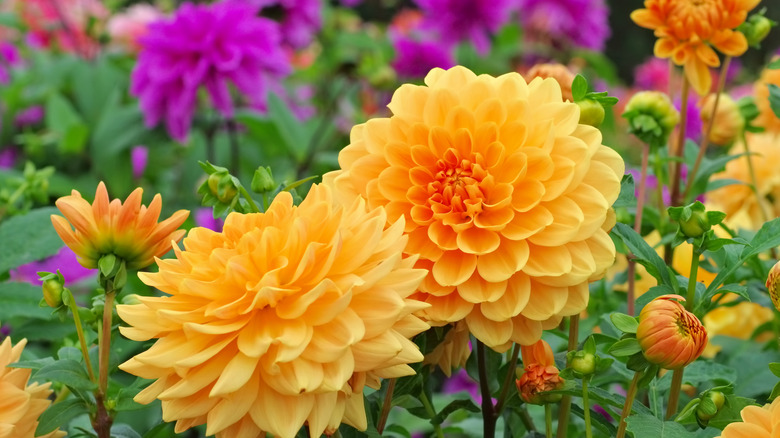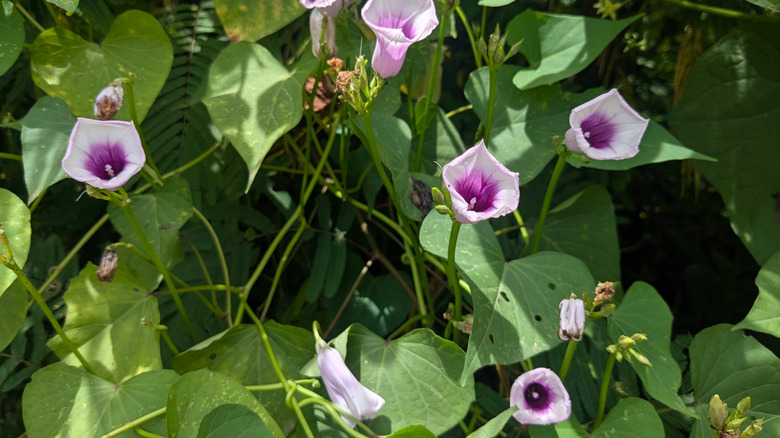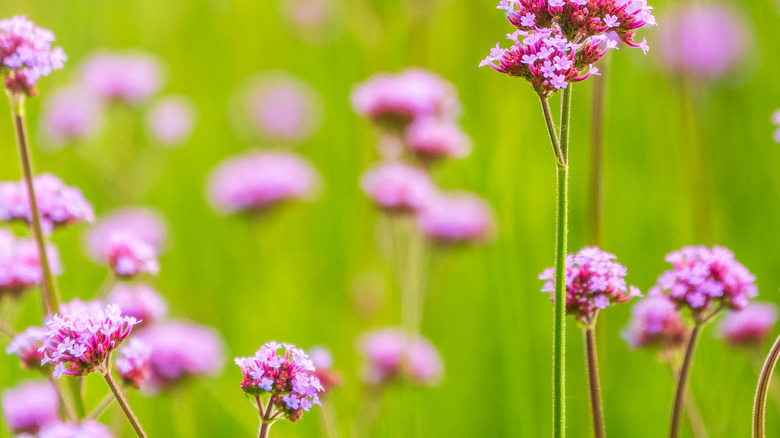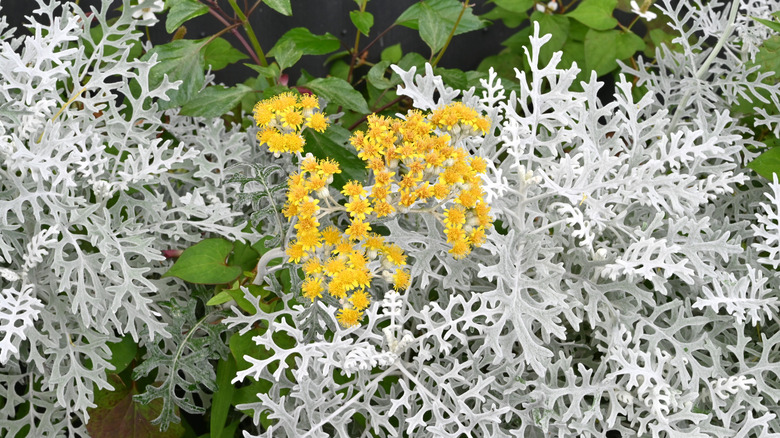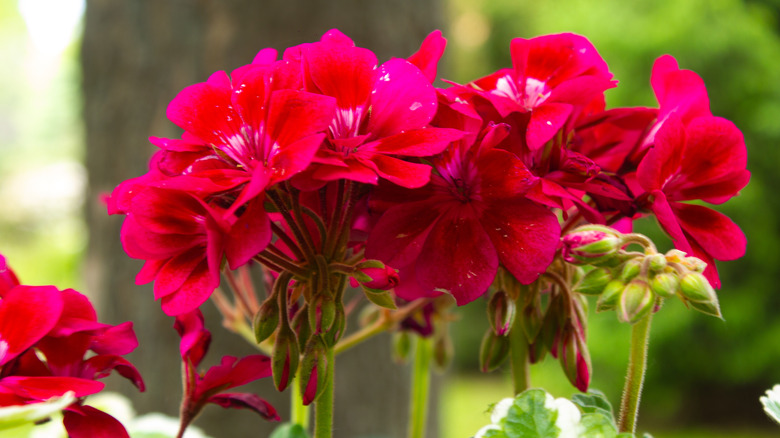11 Annuals You Need To Overwinter ASAP To Enjoy For Years To Come
We may receive a commission on purchases made from links.
Shorter days, impending (or regularly occurring) frosts, and fading blooms and foliage hasten us to tuck our gardens in for a well-deserved winter rest. These are also signs that it's time to remove annuals from the garden. After putting so much effort and money into your flower beds, it's reassuring that by investing a bit more time, you can save many of your annuals — from impatients and begonias to verbenas and lantanas — for another season. Some of these can overwinter as houseplants until spring in a warm, sunny window. Meanwhile, those with bulbs or tubers may need to come out of the ground and be adequately stored while they stay dormant.
While lots of these plants won't make it through a dip below freezing, don't panic if your first frost for the year has already come and gone. For example, plants like dusty miller can handle a bit of a chill. However, annuals growing from bulbs, rhizomes, or tubers will rot in the ground if they're left too long in cool, damp soil. Still others can come out of the ground after the first frost, like dahlias.
Since timing is everything with some of these plants, we've arranged them in order of priority. At the top of the list are ones that have the least chance of making it through a cold snap, while plants near the end of the article can wait it out a bit longer or only need minor care.
Begonia
Begonias are among the most tender annuals, so it's best to get those beauties out of the soil before a frost hits if you live in zones 8 and under. You can still remove and store begonia tubers right after the first frost, but don't drag your feet. Tuberous varieties need to go dormant during the winter. Once the leaves have died back and the soil is dry, take the dormant tubers from the soil and let them dry out fully before storing them in a cardboard box or paper bag in a cool, dry space.
Impatiens
You should be impatient to prep your impatiens for winter. These delicate flowers are only hardy in zones 10 and up, and even a light frost will stop them in their tracks. Luckily, as long as they have adequate light, impatiens thrive as houseplants over the winter (though they may need a grow light if your windows or latitude doesn't afford them enough sun). If you don't have space for yet another houseplant, you can take cuttings to propagate or urge your houseplant to grow vertically with a DIY hanging planter.
Bougainvillea
As you'd expect from a tropical plant, bougainvillea isn't equipped to weather sub-freezing temperatures. This vibrant vining plant needs special winter care in zones 8 and below. If your winters frequently regale you with temperatures of 25 degrees Fahrenheit or lower, it's a good idea to grow the bougainvillea in a pot you can bring indoors. In a 40-degree garage, a potted bougainvillea can go into dormancy. In warmer zones expecting freezes, avoid pruning the plants or fertilizing them once temperatures dip below 40 degrees Fahrenheit. Cover the plant with a frost cloth and the roots with a layer of mulch.
Lantana
With brilliant circular sprays of flowers, lantana is as pretty as it is susceptible to cold. If you live in zones 7 and below, your lantana should come indoors for the winter. Instead of treating it as a houseplant, it's best to let your lantana go dormant for the season since winter sun isn't strong enough to sustain it. Place your lantana in a spot with low light and a consistent temperature of 50 to 60 degrees Fahrenheit. Don't forget to water your sleeping lantana when the soil feels dry.
Browallia
Jewel-toned browallia is a native of Central and South America, so it's understandably intolerant to cold. If you live in zones 8 and lower, your browallia needs to come inside before the first frost. Once the leaves start yellowing, cut down on watering so that your browallia gets the message that it's time to hibernate. Handling the root ball carefully, repot it in well-draining soil and trim away all but about 4 inches of the growing plant. Place the pot in a bright south-facing window in a spot that stays around 60 degrees Fahrenheit.
Bleeding heart vine
Bleeding heart vine (Clerodendrum thomsoniae) is native to West Africa and isn't a big fan of chilly weather. In zones 8 and colder, winter freezes will kill this plant. Luckily, it will live happily as a houseplant after the summer warmth has faded. So, bring your potted bleeding heart vine indoors once frosts are expected. Its growth will naturally slow in fall and winter, so its watering needs drop to only twice a month. Place the pot in a cool spot (between 55 and 65 degrees Fahrenheit) where it will get moderate sun.
Dahlia
As climate inappropriate as it may seem, tropical dahlias were a favorite of Queen Victoria and are the official flower of Seattle and San Francisco. But if you're growing them below zone 8, their tubers need to come out of the ground before freeze-up. You can wait until the first frost, but not much longer. Cut the dead foliage to a few inches above the ground, remove the tubers, rinse and dry them, then place them in a natural fiber basket or perforated cardboard box. A cool garage is an ideal place to store dormant dahlia tubers.
Sweet potato vine
Ornamental sweet potatoes (Ipomoea batatas) are a heat-loving plant with striking purple and white trumpet-shaped flowers. These natives of Central and South America can't make it through the deep freeze, and digging up the tubers or propagating them via cuttings is the best way to see them through to another season in zone 8 or colder. Before the first frost, trim away the vines and dig up the tubers. Arrange them in a perforated box, cover them with coconut coir or peat moss, and place them somewhere cool and dark.
Verbena
If your snug winter abode has a sunny spot for another houseplant, your outdoor-dwelling verbena should get first dibs. Gardeners in zones 7 and below can enjoy their outdoor verbena late into the fall. But once it's done filling your garden with hummingbirds for the year, why not let your lovely plants green up your rooms all winter long? Set in a warm, sunny spot, your verbena will keep going throughout winter, although if it's not sunny enough, it might not continue blooming. You can also take cuttings to propagate for next season.
Dusty miller
Despite the frosted look of dusty miller's (Centaurea cineraria) leaves, the plant won't typically withstand a winter in regions colder than zone 8. Still, these plumy plants will survive a short period of cool temperatures, so you have a grace period for lifting them from your flower beds. Transition your dusty millers to indoor living for the winter starting a few weeks before the first frost. Trim back the foliage by about half and pot the plant in well-draining soil. Dusty miller likes bright, indirect sun, so setting it up in a south-facing window should do the trick until spring.
Geranium
Welcome your geraniums (Pelargonium) to your warm home for winter. Although geraniums are native to warm southern African locales, they will hold their own in temperatures as low as 40 degrees Fahrenheit. That said, a hard frost will cut their life short. In zones 8 and below, enjoy your geraniums for multiple seasons by holding back on fertilizer for a few weeks before frost and snipping the plant back by about a third. Gently uproot the geranium and plant it in a well-draining pot and soil. As long as it gets sufficient sun, the geranium will be happy in average room temperatures.
